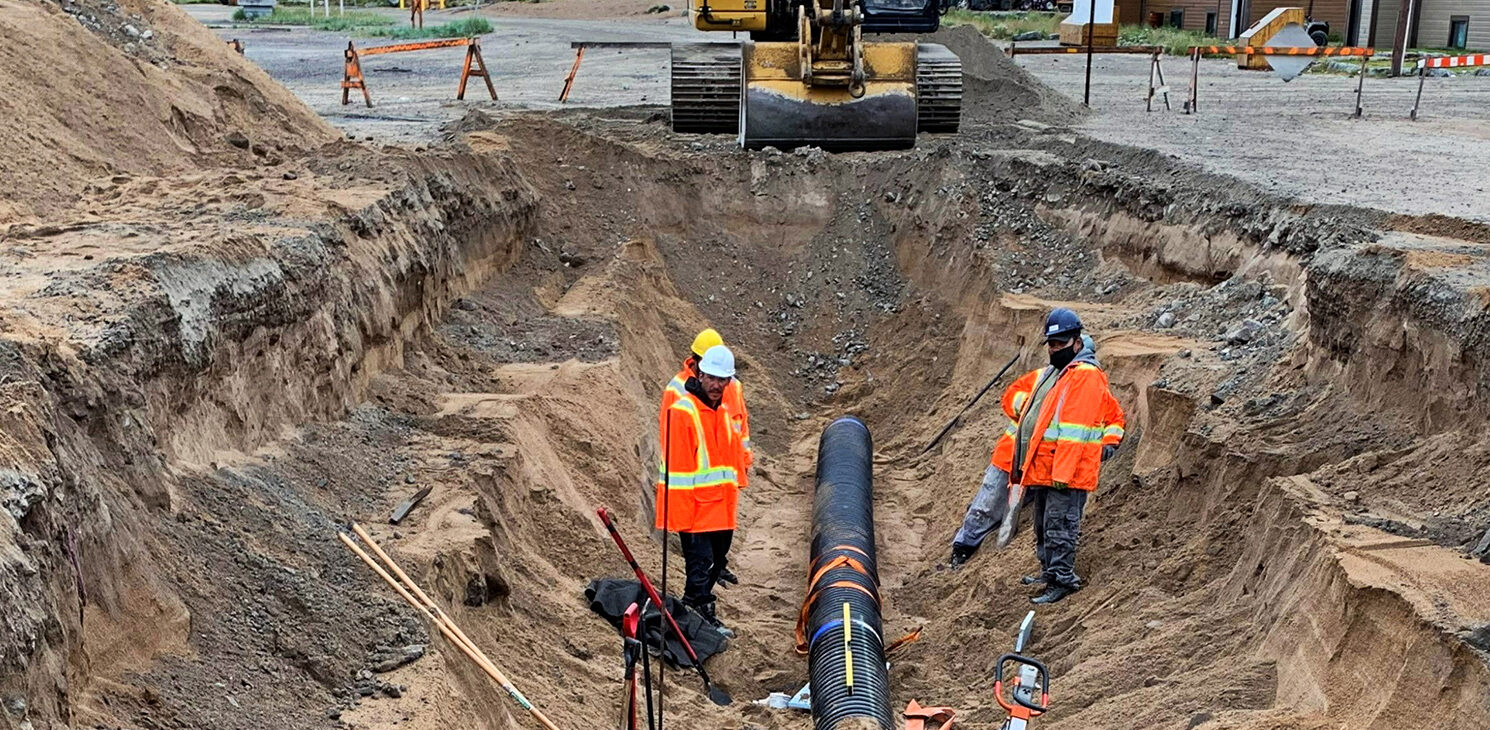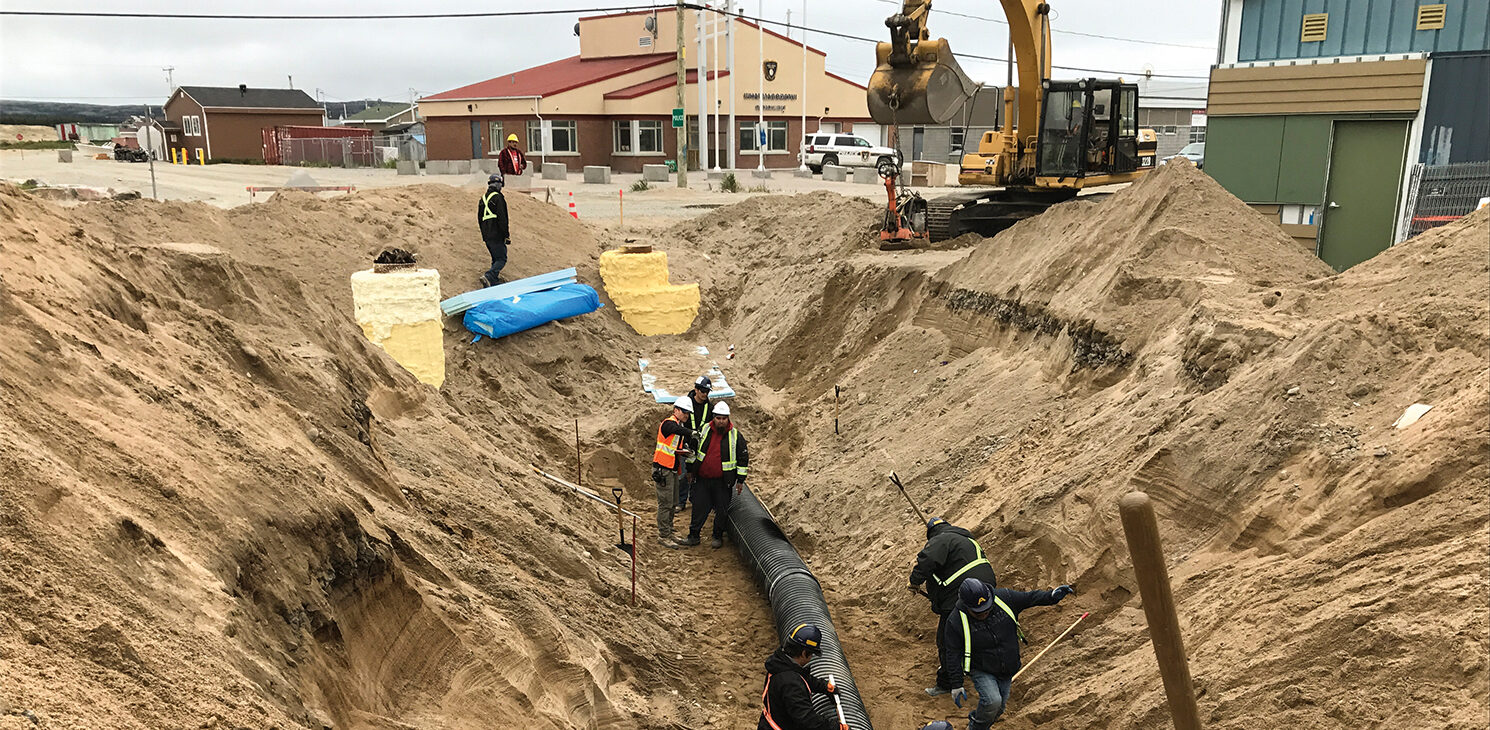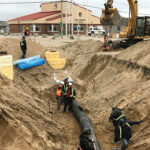This remote community of approximately 980 people experiences increasingly frequent episodes of heavy rainfall in the fall and spring (combined with snow melting). The resulting large accumulations of water in some areas impede pedestrian and vehicular mobility, accelerate the deterioration of gravel roadways, and cause damage to foundations already strained by freezing and thawing events.
The Cree Nation Government wanted to develop a drainage master plan for the community of Whapmagoostui to address its stormwater management issues. CIMA+ was mandated to carry out this master plan and to propose a global solution adapted to the extreme conditions to which the site is exposed and allowing the work to be carried out by the members of this Cree Nation. The conception combines traditional drainage techniques with the use of HDPE pipes to minimize the weight and facilitate handling by the available equipment and workforce. This has allowed the reduction of the cost and carbon footprint of transporting materials and equipment. Components such as sewer manholes and sumps were selected based on criteria of strength and durability in a harsh northern environment. All material quantities were calculated to avoid the accumulation of surplus material in the already overloaded dry storage facilities in the northern region. Climate change was taken into account in the calculation of requirements.
The project was carried out by a team of Cree workers with the equipment available on site. The production capacity of the Cree team was optimized thanks to the constant support of CIMA+’s engineering and supervision teams. Each phase was planned so that the infrastructure would be functional once completed. The people assigned to supervise the work had to be able to pass on their knowledge of the installation of the components required for the construction of the infrastructure. The synergy that quickly developed between the CIMA+ employees and the Cree team members was crucial to the success of the project.
This project had lasting social and economic benefits. The profits generated by the use of local equipment were reinvested in the purchase of new, more efficient equipment. The trained workers were able to contribute to other projects carried out in parallel by entrepreneurs looking for local labour. In addition, this project allowed the Whapmagoostui Cree First Nation to demonstrate its capacity to carry out this type of undertaking. In brief, it has fostered a local and independent economy for the benefit of the quality of life of the entire population of this community. The success of this partnership between the CIMA+ team and the Whapmagoostui Cree First Nation is rooted in the exchange of engineering knowledge and wisdom with these founding people.















